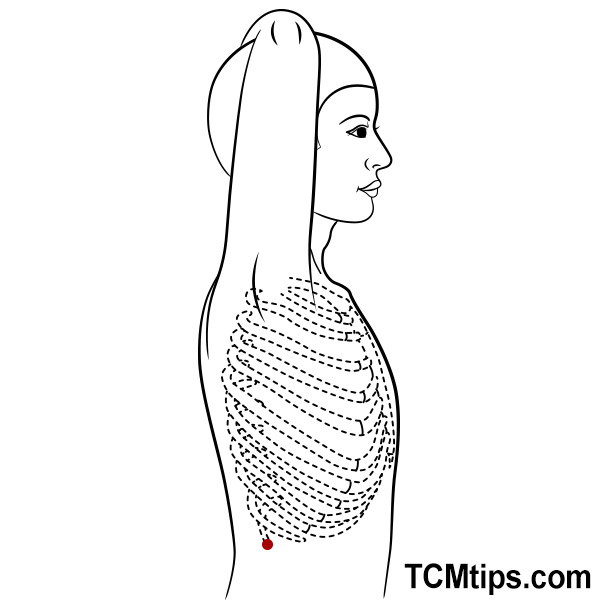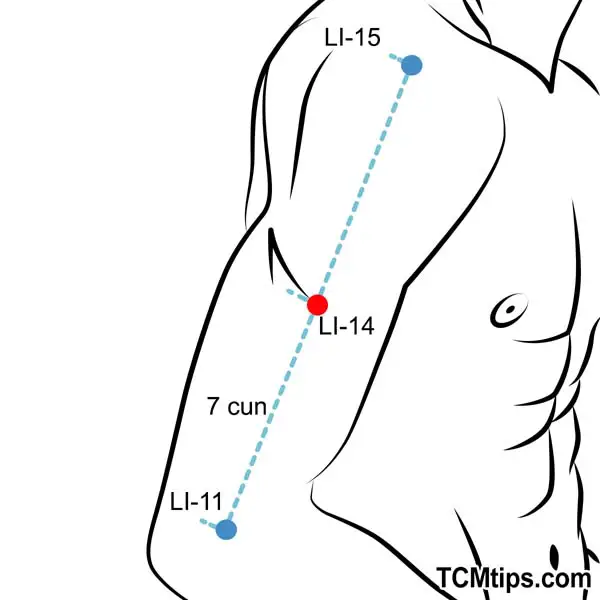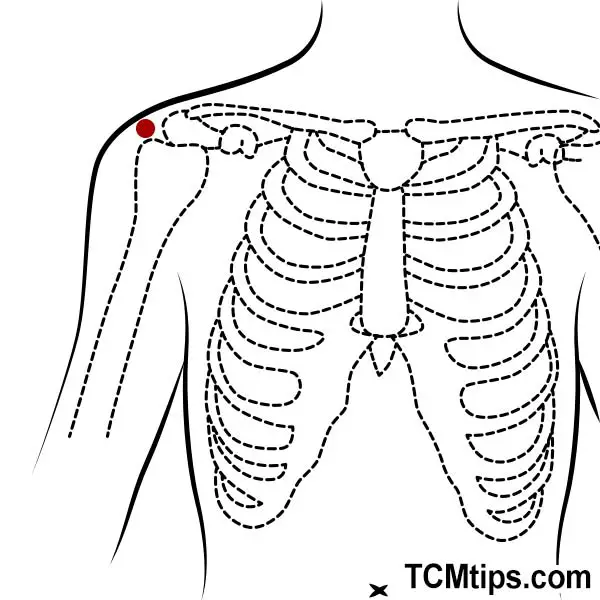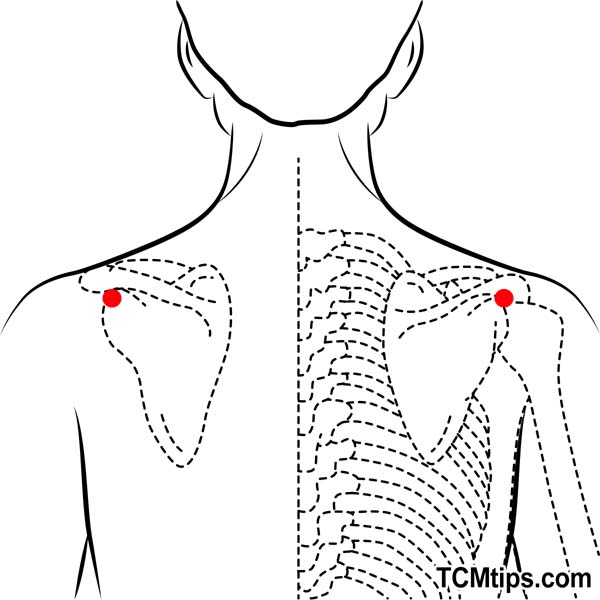Shoulder tendonitis is a condition that can cause chronic pain and inflammation in the shoulder. It is often caused by repetitive motions or overuse of the shoulder joint. However, it can also be caused by an injury or infection.
Chronic shoulder pain can be treated with rest, ice, anti-inflammatory medication, and acupuncture for shoulder tendonitis. Physical therapy may also be recommended to help stretch and strengthen the muscles and tendons around the shoulder joint.
Does Acupuncture Help Shoulder Tendonitis?
Acupuncture for shoulder pain has been proven countless times to reduce inflammation and promote healing.
In addition, acupuncture can also help to improve circulation and reduce stress.
Acupuncture is a traditional Chinese medicine that has been used to treat a wide variety of conditions for thousands of years.
Also, rotator cuff tendonitis acupuncture is commonly used in the treatment of rotator cuff tears, a common athletic injury that can cause pain and weakness in the shoulder.
The rotator cuff is a group of muscles and tendons that attach the arm to the shoulder. These muscles and tendons help to lift the arm.
How Long Does It Take For Acupuncture To Work For Shoulder Pain?

While acupuncture is a popular treatment whose primary outcome is pain relief, it usually takes multiple acupuncture sessions before you see any significant relief from shoulder pain.
That said, some people do report feeling better after just one session, so if you’re considering acupuncture for shoulder pain, be prepared to commit to a few sessions.
Most shoulder injuries stem from the rotator cuff. The amount of time it takes to recover from a rotator cuff injury varies depending on the severity of the injury. Recovery time can range from weeks to months or even years.
However, with proper treatment and the help of rotator cuff tendonitis acupuncture, most people make a full recovery within four to six weeks.
What Are The Acupressure Points For Shoulder Tendonitis?
To effectively administer rotator cuff tendonitis acupuncture, we first need to know the acupressure points.
Acupoint: LU-6 (Other Names: Lung-6/Kong Zui/Maximum Opening)

The acupoint LU-6 is known as “Kongzui,” which means “Maximum Opening.” LU-6 is situated on the radial palmar aspect of the forearm, on the line joining LU 5 and LU 9, 7 cun above the transverse crease of the wrist. The LU-6 acupoint is classified as the Xi-Cleft point of the Lung Meridian.

Acupoint LU-6 is classified as the Xi-Cleft point of the Lung Meridian. The functions of acupoint LU-6 include:
– descending and regulating Lung Qi
– stopping bleeding, and to clear heat
In addition, the acupoint for acupuncture for shoulder tendonitis helps with:
– Bleeding hemorrhoids
– acute hemoptysis (coughing up blood)
– Sore throat
– epistaxis (nosebleed)
– cough and asthma
– pain in the forearm
– febrile diseases without sweating
– shoulder tendonitis
Once you’ve located the point, apply firm pressure with your thumb. With your other fingers, grasp the back of the forearm and place your thumb on the point. Press and hold for 2-3 minutes while taking slow, deep breaths.
Tenderness is likely to occur in this acupoint, so stimulate it to provide some pain relief. This acupoint also reduces tendon friction, relaxes the muscles in the biceps, and helps reduce inflammation.
Acupoint: GB-25 (Other Names: Gall Bladder-25/Jing Men/Capital Gate)

The acupressure point “GB-25”, is represented in mandarin as “Jingmen” and in English as “Capital Gate.” This acupoint is located 1.8 cun posterior to Liv-13, on the lower border of the free end of the 12th floating rib, on the lateral side of the abdomen.
This acupoint is classified as the Front-Mu Point of the Kidney Meridian. GB-25 opens the water channels and strengthens the low back.
One of the liver’s primary functions is ensuring the smooth flow of “Qi” and storing blood. If you have a depleted Qi, your body can be imbalanced, and the function of your liver can be significantly reduced.
When the function of the liver declines, the efficiency of your muscles, ligaments, and tendons might be compromised.
Healing the liver is the first and crucial step to ensuring the smooth functioning of your meridians.
Stimulating the GB-25 acupoint will cause slight discomfort and even pain if your liver is over-stressed and fatigued. However, this acupoint is vital to help with inflammation and to lighten the load on the shoulders.
GB-25 is one of the acupressure points for gallbladder inflammation, used in the diagnosis and treatment of dysuria, edema, lumbar pain, hypochondrium pain, abdominal pain, and diarrhea.
Acupoint: LI-14 (Other Names: Large Intestine-14/Bi Nao/Upper Arm)

The acupressure point “LI-14”, is represented in mandarin as “Binao” and in English as “Upper Arm.” This acupoint is located on the lateral side of the arm, 7 cun above the insertion of m. deltoideus, on the line connecting LI-11 and LI-15.
This is yet another potent acupoint for acupuncture shoulder tendonitis in Traditional Chinese medicine. LI-14 is classified as the crossing point of the LI, SI, and UB Meridians with the Yang Wei (Linking) Vessel.
This acupoint activates the meridian, relieves pain, improves vision, and dissolves phlegm nodules. It is useful in clinical conditions such as eye diseases, photophobia, burning pain, heaviness, redness, swelling, and pain, deterioration of vision, difficulty in distinguishing colors, scrofula as well as shoulder and arm pain.
A study published in 2016 investigated the clinical efficacy and safety of acupuncture for the treatment of post-stroke shoulder pain. One of the acupoints chosen for acupuncture intervention in this study was LI-14.
Acupuncture treatment was found to be effective in reducing shoulder pain after stroke in this clinical trial. In 2021, a clinical case report on the management of frozen shoulder with acupuncture was published.
LI-14 was one of the acupoints used in this report’s intervention. After 24 acupuncture treatments, the symptoms in the right shoulder were resolved, with both active and passive full range of motion in all directions and pain-free movement.
These studies prove LI-14 to be one of the important acupressure points for shoulder and arm nerve pain and can be used as one of the acupuncture points for rotator cuff tendonitis.
Acupoint: LI-15 (Other Names: Large Intestine-15/Jian Yu/Shoulder Bone)

The acupressure point “LI-15”, is represented in mandarin as “Jianyu” and in English as “Shoulder Bone.” This acupoint is located on the deltoid muscle of the shoulder, in the dip of the anterior superior region of the shoulder, when the arm is abducted 90 degrees laterally or forward.
Acupoint LI-15 is classified as the Crossing point of the LI Meridian with the Yang Qiao Vessel. It benefits the shoulder joint by expelling Wind-Damp and Wind, relieving discomfort and circulating qi in the meridian, and is used in conditions such as upper-extremity paralysis, discomfort, shoulder motor impairment, rubella, and scrofula.
This acupoint also relieves skin rashes, including hives, by treating wind stroke and clearing heat. Acupoint LI-15 also serves as one of the points in acupuncture for shoulder tendonitis.
In 2014, a clinical trial was conducted to investigate the efficacy of acupuncture at local and distal points for pain relief and shoulder function improvement in patients with chronic shoulder pain. The intervention included LI-15 as the local acupoint in this study.
In 2017, another study was conducted to investigate the pattern of experimental pain responses at acupoints in patients with unilateral shoulder pain. LI-15 was one of the acupoints used in this study, and the results supported the use of acupoint LI-15 for the treatment of the rotator cuff tendon. Hence, LI-15 can be used as acupressure for inflammation and acupuncture for shoulder tendonitis.
Acupoint: TE-14 (Other Names: Triple Energizer-14/Jian liao/Shoulder Crevice)

The acupressure point “TE-14”, is represented in mandarin as “Binao” and in English as “Upper Arm.” When the arm is abducted in the shoulder region, this acupoint can be found posterior to LI-15, in the depression posterior, and inferior to the acromion.
TE-14 activates the meridian, relieves pain, strengthens the shoulder, and dispels Wind-Damp. Acupoint TE-14 is a significant point for rotator cuff tendonitis acupuncture.
Shoulder tendonitis is an inflammation of the rotator cuff and/or biceps tendon. It is usually caused by surrounding structures pinching your tendon. Participating in sports that require the arm to move over the head repeatedly can cause shoulder tendonitis.
Other than being used as an important acupuncture for tendonitis point, TE-14 is also a shoulder pressure point used to manage shoulder and arm pain and limitation.
When cold and dampness accumulate in the shoulder area, they obstruct the flow of blood, causing pain. The obstructions caused by these external pathogens are known as “Shoulder Bi Syndromes” in Chinese Medicine.
Different insertion methods at acupoint TE-14 were discussed in a study that can effectively relieve pain in the tendon, joint capsule, and compressed nerve, thereby relieving shoulder bi syndrome.
Acupoint: TE-15 (Other Names: Triple Energizer-15/Tian Liao/Upper Arm Hole)

The acupressure point “TE-15”, is represented in mandarin as “Tian Liao” and in English as “Upper Arm Hole.” This acupoint is located on the superior angle of the scapula.
It is classified as the crossing point of the San Jiao Meridian and the Yang Wei Vessel. Other than being an acupuncture shoulder tendonitis point, TE-15 activates the meridian, relieves pain, and eliminates Wind-Damp.
Pain in the shoulder and elbow, neck stiffness, shoulder arthritis, shoulder impairment, and frozen shoulder are some indications for using acupoint TE-15. Acupuncture for tendonitis has widely been incorporated with western medicine and TE-15, one of the acupressure points for trapezius pain, can provide beneficial results.
Long-term massage of the TE-15 (Tianliao) point with your thumb for about 200 times, or press and rub it for 3 to 5 minutes, can treat shoulder and back pain and stiff neck.

Try our Anti-Aging Gua Sha Tool designed to bring out your skin’s natural glow.
Best Gua Sha Product- Anti-Aging: The tool is designed to target 11 specific aging signs such as wrinkles and sagging skin. By following the 7-step routine, users can improve skin firmness and reduce fine lines naturally.
- Enhances Skincare Routine: It works effectively with serums and lotions, boosting absorption and efficacy of skincare products.
- Visible Skin Improvement: Users can expect a smoother complexion, reduced puffiness, and a more youthful appearance.
 P. Sze
P. Sze 

















